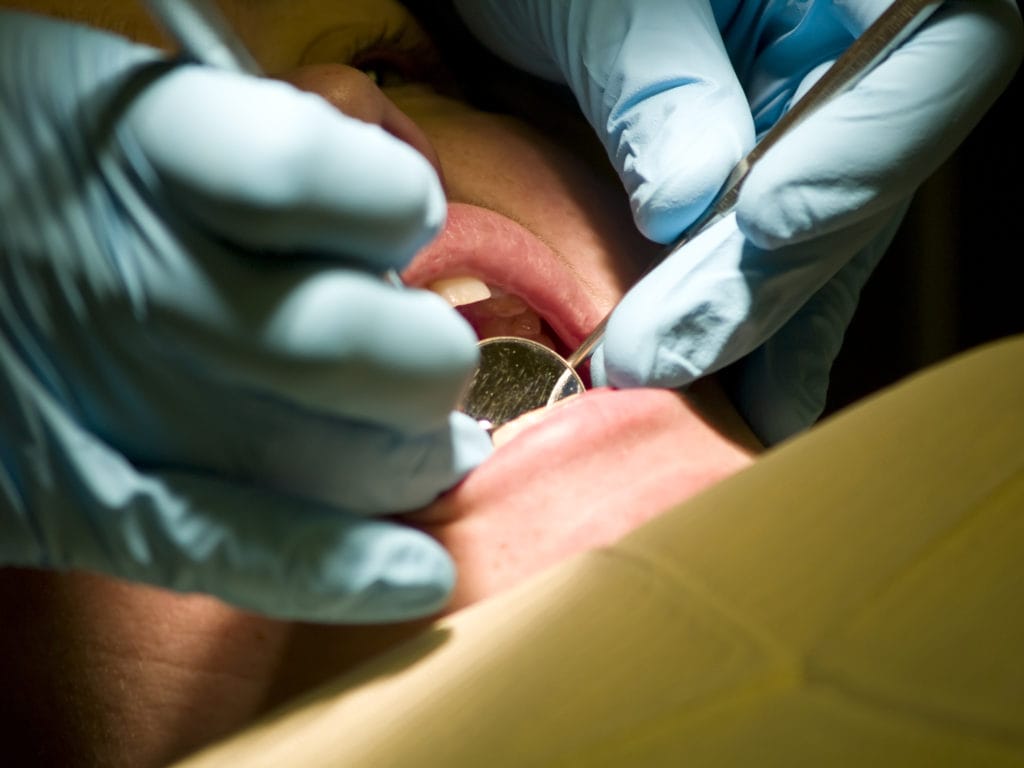Table of Contents
If your face swells after a tooth extraction, apply an ice pack to the affected area for 20 minutes every hour during the first 24 hours. After 48 hours, switch to a warm compress. Maintain good oral hygiene by gently rinsing your mouth with warm salt water. Avoid smoking and eat soft, nutritious foods. If swelling persists or increases after three days, or if severe pain, fever, or chills occur, contact your dentist immediately as these could be signs of an infection.
What to Expect in Terms of Swelling?
After a tooth extraction, it’s normal to experience swelling in the face. This swelling typically peaks around the second or third day post-procedure. Along with swelling, you may notice some skin discolouration, which should fade as the swelling decreases. If swelling persists or worsens after three days, it’s important to contact your dentist as this could indicate an infection.
Taking Care of Your Mouth After a Tooth Extraction
Tooth extraction like wisdom tooth removal Perth can be a painful procedure. Your mouth becomes quite sensitive. If you’ve had a tooth extracted, you’ll need to take special care of your mouth. Even on the first day, doing certain things can help you feel better and heal faster.
Immediately following the extraction of a tooth
- To stop the bleeding, place a gauze pad over the surgical site.
- Take OTC pain relievers and prescribed medication.
- Keep strenuous activity to a minimum for the day.
- To reduce swelling, alternate applying ice packs to your cheek for 15 minutes on and 15 minutes off.
- Avoid spitting, smoking, or using a straw to prevent accidentally dislodging the blood clot for at least a week.
- There is a lot of bleeding at the surgery site.
48 hours after the extraction
- Rinse your mouth vigorously to remove the blood clot
- Drinking straws are not to be used.
- Quit smoking.
- Do NOT agitate the extraction site with your tongue or fingers.
Other Complications after a tooth extraction
1. Bleeding
Bleeding is completely normal after tooth extraction. During the first 36 hours, pinkish-tinted saliva and minor oozing are fairly common. Use dampened gauze pads and biting down to keep pressure on the area if bleeding becomes excessive.
Because tannic acid helps blood vessels contract, a moistened tea bag can be used instead of gauze pads. Apply gentle biting pressure to the gauze or tea bag for 30 minutes. Please keep in mind that heightened emotions, sitting upright, and exercise can increase blood flow to the head, resulting in excessive bleeding.
2. Bone sequestra (dead tooth fragments)
Small sharp tooth fragments were not wholly removed from some patients during surgery. As a natural healing process, these dead bone fragments, or bone sequestra, slowly work through the gums during the recovery period. This can be painful until the sequestra are removed, so please contact our office right away if you feel any sharp fragments poking through the surgery site.
3. Dry socket
The pain from your tooth extraction should gradually fade over the next few days. Patients occasionally report that their pain worsens to a throbbing, unbearable ache that travels up to the ear. It’s most likely a case of a dry socket. It is a dry socket when a blood clot becomes irritated and is forced out before healing is complete. Some Food and debris can then get into the socket, irritate it, and cause discomfort. Dry socket is more common in tobacco users and women who use oral contraceptives. Although a dry socket is not an infection, it does necessitate a trip to our office. Please contact the practice right away if you suspect you’re suffering from a dry socket.
4.Numbness
Many patients report that they are still numb several hours after their tooth extraction. It’s normal to experience numbness around the mouth for 10 to 12 hours after surgery.
5.Trismus (difficulty opening and closing mouth)
Don’t be alarmed if you have a sore jaw and difficulty chewing or swallowing. Patients’ chewing muscles and jaw joints may be sore for up to three days after surgery. It may be difficult to open and close your mouth due to the soreness. The discomfort should fade over time.
What are the Benefits of Not Smoking After Tooth Extraction?
Cigarette smoke contains chemical toxins that can cause gum and mouth tissue damage and delay healing. If you smoke and expose your healing gums to these toxins, serious complications such as dry socket, inflammation, or infection can occur.
When do I need to be concerned about swelling after a tooth extraction?
Swelling is common after surgery, and it won’t reach its peak for another 2-3 days. However, using ice packs right away can help to reduce swelling. Apply an ice pack or a zipper-lock bag filled with ice to the sides of the face where surgery was performed.
What is the most common complication following tooth extraction?
The most common complication following tooth extraction is a condition known as a dry socket. This occurs when the blood clot that normally forms in the socket after extraction is dislodged, exposing the underlying bone and nerves, and can result in severe pain and delayed healing.
Coolamon Dental Clinic offers family-friendly dental care – from cosmetic dentistry to affordable dental implants and general dental care. We take the time to listen to you and offer the right solution for you. Book a consultation with one of our experienced dentists now.
Related Articles:

